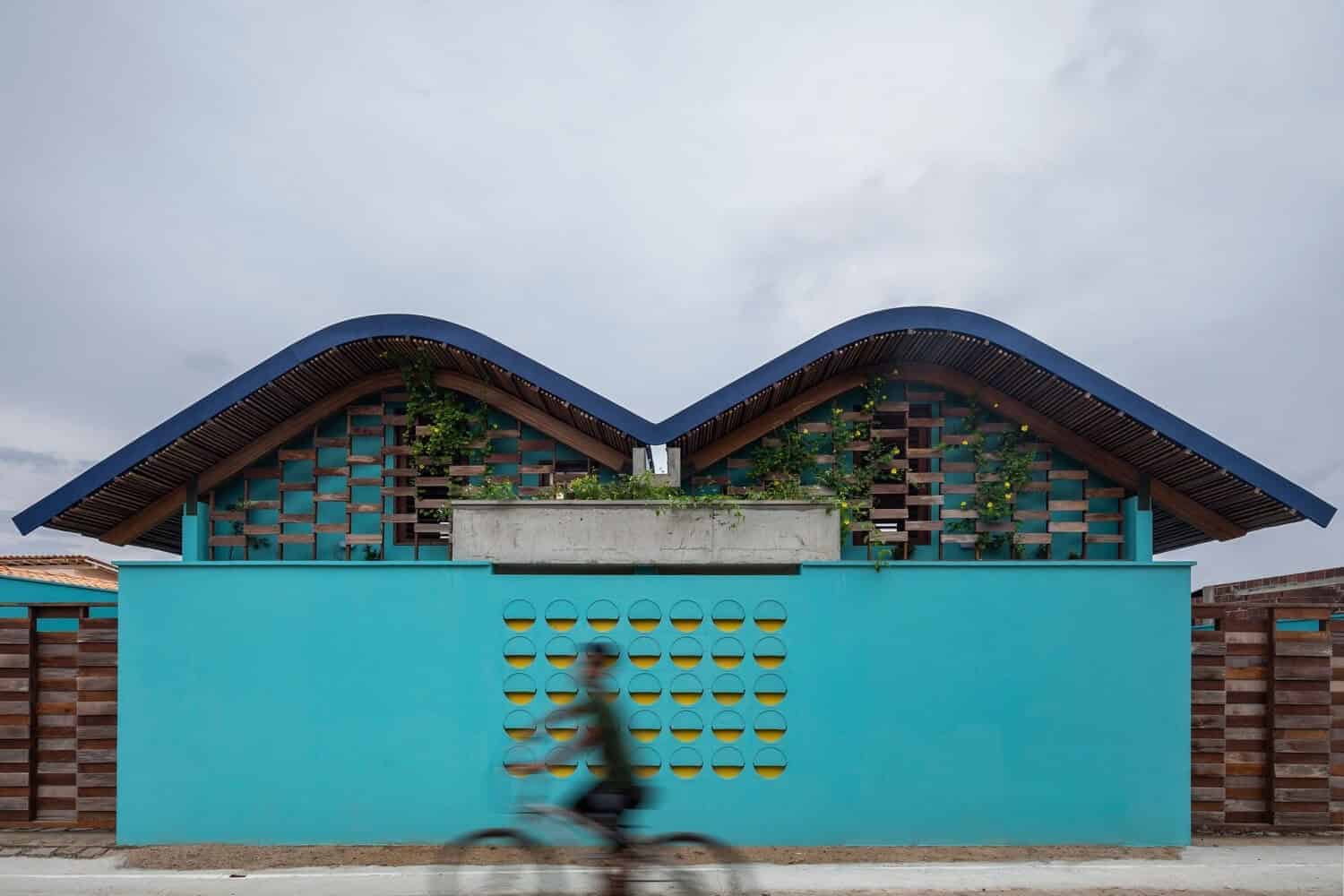
- Project: Gutter House
- Architect: Atelier Daniel Florez
- Location: Brazil
- Year: 2021
- Area: 370 m2
- Photography: Maira Acayaba, Juan Gomez
In the coastal village of Sagi, Brazil, Gutter House by Atelier Daniel Florez redefines contemporary beach architecture through poetic references to the maritime traditions that shaped the region. Completed in 2021, this 3,982-square-foot project consists of two paired beach houses designed for lifelong friends, rooted in history yet expressed with a modern sensibility.
Honoring Shipbuilding Traditions
The design pays tribute to the shipbuilders who once erected baroque cathedrals across northeastern Brazil, applying their naval carpentry expertise to monumental architecture. Centuries later, Gutter House revives this spirit with wave-like wooden forms that echo the surrounding dunes and the rhythm of the ocean.
Conceptually, the houses are built as inverted ships, with laminated wooden ribs fixed to a central concrete gutter, always visible as a structural and symbolic spine. Inside, curved bamboo and wooden beams create an enveloping interior reminiscent of naval hulls, complemented by mast-like pillars, circular windows, and floors patterned like fishing scales.
The 22-Meter Gutter: A Functional Sculpture
A defining feature is the 22-meter-long concrete gutter clad in blue ceramic tiles, which channels rainwater from the roof to irrigate plants on the rear façade. This living wall provides natural shading and cooling, reducing the impact of the intense evening sun while enhancing the project’s ecological performance.
The gutter is both a functional system and an architectural gesture—bridging water, landscape, and structure into a singular expression.
Dialogue with the Landscape
The twin houses integrate seamlessly into Sagi’s coastal village, surrounded by ceramic-tiled homes. The double façade and double wooden-tiled roof minimize environmental disruption, while the wooden undulations resonate with the shifting dunes and fluid geometry of the sea.
Interiors with Nautical Sensuality
Inside, the residences combine warm wood, bamboo, and blue hues to evoke the mystery and sensuality of the ocean. Sculptural beams and delicate curves craft intimate spaces, while natural ventilation and light enhance comfort in the tropical climate.
A Contemporary Homage
By blending heritage and innovation, Gutter House is both a tribute to ancient sailor-architects and a modern statement of ecological sensitivity. Its design demonstrates how architecture can embody memory, landscape, and sustainability, creating a home that is as poetic as it is functional.